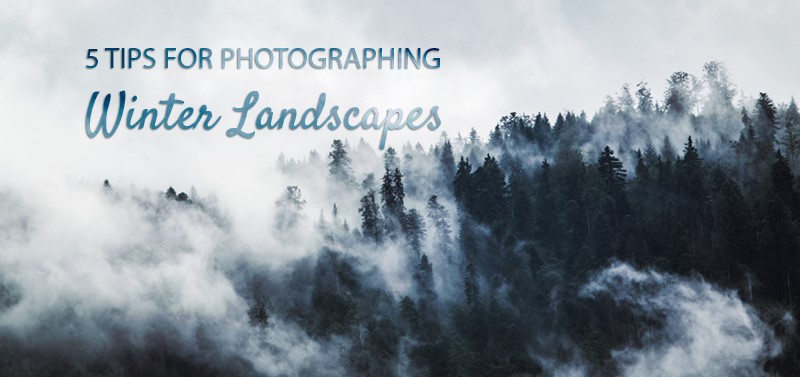
Embrace the cold. Capture the beautiful winter scenery around you.
Try these 5 tips for taking better landscape photos in winter.
1. BE PREPARED
For photographing in cold weather, you will need to make sure you're dressed appropriately. Landscape photography takes time, so you want to be comfortable.
· Wear water-proof shoes.
· Bring warm gloves with you.
· Take a tripod - when the light is low, you need to be able to shoot at slower shutter speeds.
· Make sure your batteries are fully charged. The cold drains them faster than usual.
· Pop an umbrella in the boot too, just in case you're going to shoot some awesome wet weather landscapes.
2. LOOK FOR LEADING LINES
Lead the viewer into your image by using natural or structural lines, such as a ray of sunlight, a fence line, tyre tracks and rows of trees. Place them in your frame in a way that draws the viewers eye to what you want them to look at. No lines in your scene? Make tracks of your own. For instance, try carefully walking over frosty grass to make a trail into your image.
3. SHOW OFF PATTERNS
There are tons of patterns in nature. Add interest by bringing out patterns in your landscapes. You might find them in the details or in the entire landscape.
- Look for repetition of shapes, like the way a line of trees grow, or a stack of mountain ridges creating rugged lines in the distance.
- Is there symmetry in the scene?
- Can you see interesting spacing of elements in your view?
- Look for elements that break the pattern too, for example, one tree that grows different from the rest. This will give your image a focal point.
- Look for any colours that create patterns.
- They don't have to be still patterns, look at passing clouds - is there a repeating shape? Or a flock of birds - what formation are they flying in?
4. TRY SHOOTING IN MONOCHROME
Landscapes don't have to be colourful to pack a punch. By shooting in monochrome you can emphasize lines and shapes, create a mood and emphasize contrasts.
Keep your exposures bright for highlighting snow and ice, but bring them down if you want to create mood and bring out texture in your image.
Also try long-exposures while in monochrome mode, this will give you some dreamy results.
Throw on some filters, like a polarizer, or a neutral density to control the light and contrast.
5. GO OUT EARLY IN THE MORNING
Winter sunrises are gorgeous. But that's not the only reason to start early.
- Early in the day, there might be fog or mist still around, which adds beautiful depth to images.
- The sun is low, so the light is directional, giving more definition and texture to subjects.
- It's not all about wide-angles, think about getting up close to capture details, like dew on a bare twig, or frost on a flower, and ice patterns. If you have a macro lens, you'll love looking for details even more.
- The sun rises later in winter, so you don't have to get up too early!